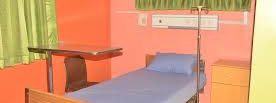A 37 year old was rushed into the hospital with severe central pain 10 on a scale of 1 to 10. He has no risk factor for heart disease such as hypertension or diabetes and no significant family history. He neither smokes nor drinks alcohol. However, he recently lost a loved one.
On examination, he was in severe pain and slightly short of breath. The electrocardiography (ECG) shows fast heart beat. It also shows widespread changes suggestive of impaired blood supply to several segments of the heart. The echocardiogram revealed normal size heart. The contractility of the apex of the left heart and the adjoining wall was poor. There was strong contractility of the basal wall of the left heart.
He was diagnosed as having Broken heart syndrome or Takosubo cardiomyopathy. Approriate treatment was started. The chest pain resolved and the finding became normal after 5 days.
Broken heart syndrome usually occur after a stressful situation. This stressful situation include conditions such as loss of loved one. Other are surgery or any emotional distress. The body produces cathecolamines in response to stressful situations. These chemicals can attain high concentration in the blood stream. They cause vasospasm ( contraction) of the vessels of the heart. The contraction of the blood vessels will affect blood supply simulating heart attack. This condition needs to be identified so that it can be adequately managed.






